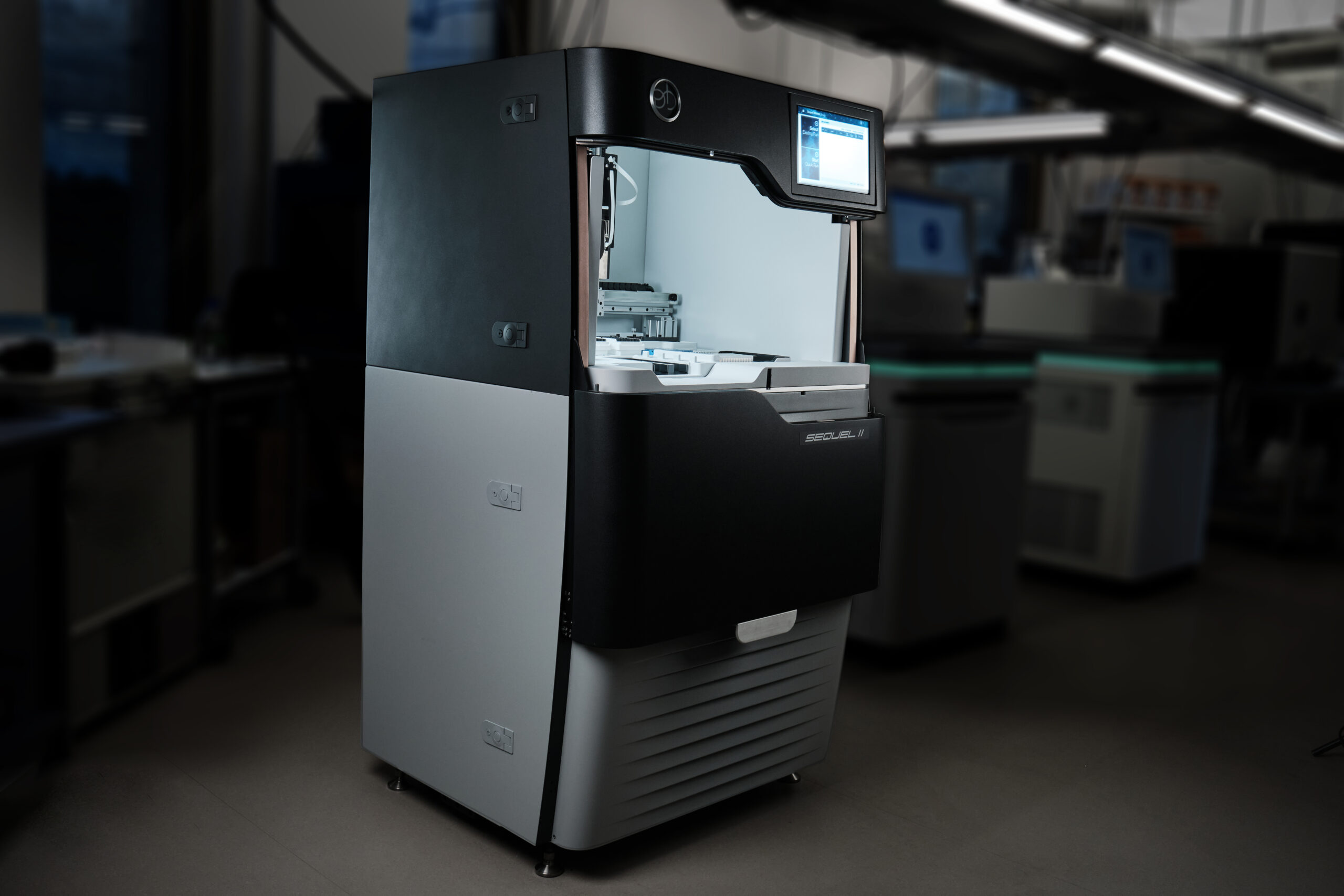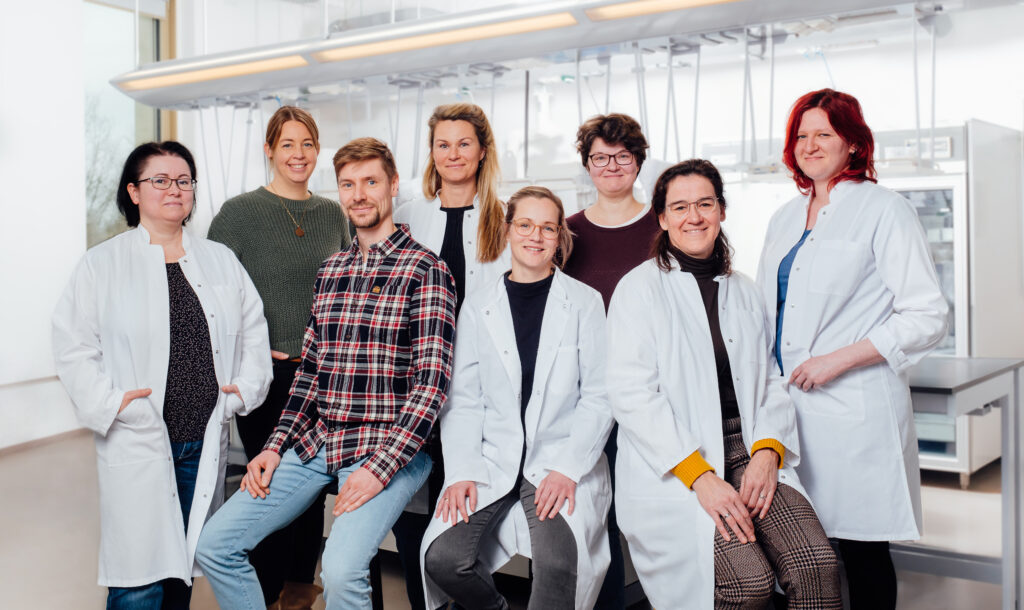
Sequencing
Sequencing Platform
The Sequencing Platform at the IKMB, operating under the name “Competence Centre for Genomic Analysis” (CCGA) is one of only four national sequencing centers funded by the DFG, the so-called NGS Competence Network (www.ngs-kn.de).
Next-Generation-Sequencing (NGS) is a high-throughput method for massive, parallel sequencing of millions of nucleotide fragments. A NGS experiments needs a carefully evaluated study design, good quality source material, a so-called library preparation, the sequencing run to generate big datasets and bioinformatic / statistician expertise to extract meaningful biological results from these data.
In our institute, we offer to do the library preparation process as well as the NGS sequencing on the basis of a scientific collaboration. Our Portfolio comprises state of the art short-read sequencing (Illumina), long-read sequencing (PacBio) as well as single-cell & spatial sequencing methods (10X Genomics) to cover a wide range of applications such as Whole Genome Sequencing (WGS), Transcriptome Sequencing (RNAseq), targeted sequencing (Whole Exome Sequencing, Panels), Methylome Sequencing and Metagenomics. A full list of analyses is listed below.
NGS Library Types:
- Whole Genome Sequencing
Whole-Genome-Sequencing (WGS) is an approach to determine the complete DNA sequence of an organism’s genome, consisting of its chromosomal DNA as well as DNA contained in mitochondria and, for plants, in its organelles. While WGS allows the researcher to have a comprehensive look at the genome, its biggest drawback is its comparatively high price tag, despite the falling prices. WGS approaches can be divided into de-novo-sequencing (recommended long-read applications) projects and re-sequencing projects. - Trancriptome Sequencing
Transcriptome Sequencing (RNAseq) sequences the expressed RNA transcripts from a source tissue or an environmental sample (meta-transcriptomics). Transcriptome data has many uses. It can guide de-novo-genome annotation by providing exon sequence information, and it can provide transcript counts for differential gene expression (DGE). PacBio full length transcript can provide isoform information or information on fusion genes. We currently offer a variety of different transcriptome library preparation workflows that differ in their target RNA sub-populations and their input requirements. - Targeted Sequencing
Targeted Sequencing (syn. Enrichment Sequencing, Panel Sequencing) is a method to reduce the complexity (and therefore the costs) of Whole-Genome-Sequencing (WGS) libraries. The most prominent example is Whole-Exome-Sequencing (WES), which enriches exonic regions of the genome by hybridizing them to pre-designed oligo baits and capturing the resulting duplex with magnetic streptavidin beads. Instead of WES, also smaller oligo bait sets can be used, e.g. to enrich only for disease-relevant genes of interest (so-called Panel-Seq), or an amplicon based approach can be done. - Methylome Sequencing
Methylation of cytosines is an epigenetic feature of eukaryotic genomes and is fundamental for cellular differentiation processes including transcription control. Interestingly, while methylation patterns can be inherited, they can also change during the lifespan of cells and tissues and is susceptible to e.g. diet or other environmental influences. In our institute, we offer methylome sequencing in the form of Reduced-Representation-Bisulfite-Sequencing (RRBS) and Whole-Genome-Bisulfide-Sequencing (WGBS). For bacteria, A-methylation is present as well, which can in addition to C-methylation, be detected directly by PacBio sequencing without the need for base conversions. - Microbiome Sequencing
The microbiome (i.e. the genomic content of the host-associated microorganisms, comprising bacteria, archaea, fungi, protists and viruses) is considered to be an important factor for the immunologic, hormonal and metabolic homeostasis of host organism. In our institute, we offer taxonomic profiling via amplicon sequencing (e.g. 16S amplicon sequencing via the microbiome lab or taxonomic and functional profiling via metagenome shotgun-sequencing. - Single Cell and Spatial Transcriptomics
We use the 10x Genomics Chromium X and Visium system to generate libraries for single-cell gene expression (3’ and 5’ GEX), immune profiling (TCR / BCR) and chromosome accessibility assays (ATAC) as well spatial transcriptomics approaches.
Currently, the fleet of NGS sequencing devices in our institute comprises two Illumina NovaSeq 6000, one NextSeq 500, three MiSeq systems and a PacBio Sequel IIe.
For detailed information on kits, specifications, and requesting a project, please visit the CCGA-Homepage.
In addition to NGS, we also provide Sanger Sequencing on three Applied Biosystems 3730xl DNA Analyzers
Contacts:
CCGA Order Portal: https://ccga.uni-kiel.de/landing_page/ordering
CCGA support ticket system: ccga@ikmb.uni-kiel.de
Sanger Sequencing: b.loescher@ikmb.uni-kiel.de

